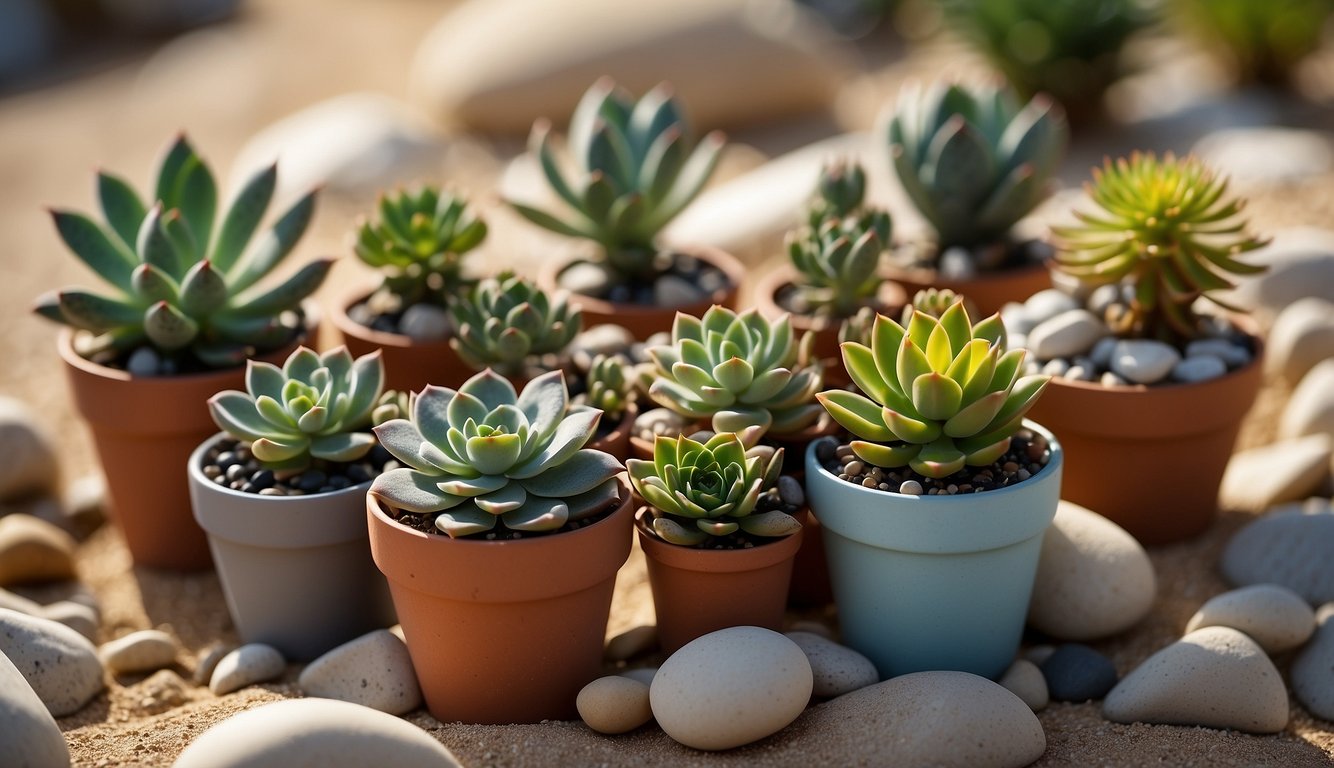TheHerbProf.com is a treasure trove of knowledge for those interested in natural healing and herbal remedies. The website is run by Paul Johnston MD. A naturopathic who has not only received extensive education in the field but also has personal experience in self-healing.
Succulent plants are a popular choice for indoor and outdoor gardening due to their unique shapes, colors, and low-maintenance requirements. One of the most important aspects of taking care of succulents is identifying the type of plant you have. This knowledge is crucial for providing the right care, as different species have different watering, lighting, and soil requirements. So that’s why we made this amazing Succulent Plant Identification for you! Let’s check it out!
Identifying succulent plants can be challenging, but with the right knowledge and resources, it can be a fun and rewarding experience. There are many different types of succulents, each with its own unique characteristics and growing requirements. Some succulent species have fleshy leaves that grow in a rosette shape, while others have spiky, oval, smooth, or strappy-shaped leaves. By learning to identify the different types of succulents, you can ensure that your plants thrive and remain healthy.
Understanding Succulents
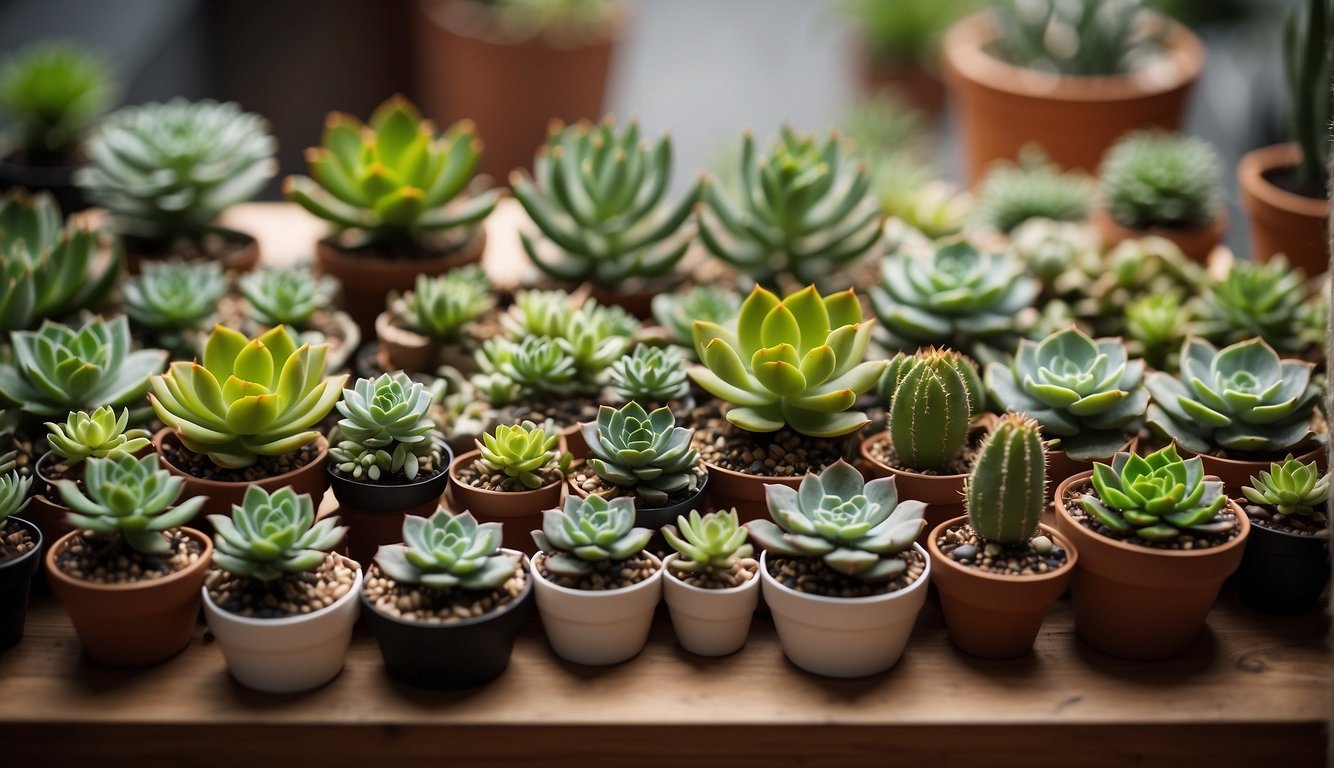
As a plant enthusiast, I have always been fascinated by succulents. Succulents are a unique group of plants that store water in their fleshy leaves, stems, and roots. This ability to store water makes them well-adapted to dry environments, and they are commonly found in arid regions such as deserts. In this section, I will provide an overview of the defining characteristics of succulents, common varieties, and their habitats.
Defining Characteristics
Succulents are characterized by their thick, fleshy leaves and stems, which allow them to store water for long periods. This adaptation helps them survive in environments where water is scarce. Another defining characteristic of succulents is their ability to survive in the absence of water by going dormant. During periods of drought, succulents can shut down their metabolic processes to conserve water until the next rainfall.
Common Varieties
There are many different types of succulents, each with its own unique characteristics. Some of the most common varieties include Aloe, Echeveria, and Sedum. Aloe is a popular indoor succulent that is known for its healing properties. Echeveria is a rosette-shaped succulent that comes in a variety of colors and is often used in landscaping. Sedum is a hardy outdoor succulent that is well-suited to dry environments.
Succulent Habitats
Succulents are found in a variety of habitats, from deserts to rainforests. In general, succulents are well-adapted to dry environments and can survive in areas with low rainfall. However, some succulents are also found in wetter environments, such as the rainforests of South America. When growing succulents, it’s important to provide them with well-draining soil and to avoid overwatering, as too much moisture can lead to root rot.
Succulents are a fascinating group of plants that are well-adapted to dry environments. Their ability to store water in their fleshy leaves and stems makes them ideal for areas with low rainfall. Whether you’re a seasoned plant enthusiast or just starting out, succulents are a great addition to any collection.
Physical Identification Features
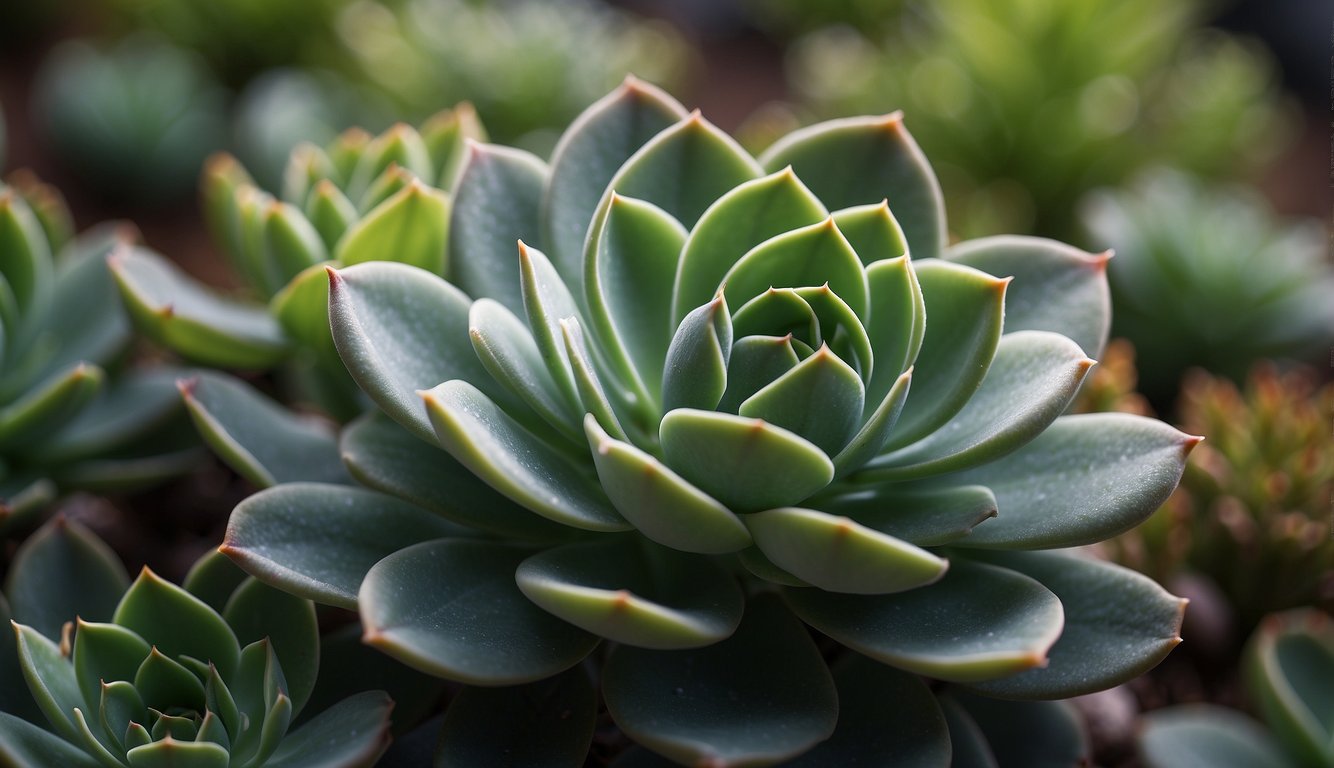
As a succulent enthusiast, I have learned to identify different types of succulents based on their physical features. Succulent plants have unique characteristics that make them stand out from other plants. In this section, I will discuss the physical features that can help you identify succulent plants.
Leaf Characteristics
The leaves of succulent plants are the most distinctive feature. Succulent leaves are fleshy and thick, and they store water. The leaves can be round, spiky, or elongated, depending on the species. The color and texture of the leaves can also vary, from smooth and shiny to fuzzy or hairy. Some succulent plants have leaves that grow in a rosette shape, while others have leaves that grow in a spiral pattern. Knowing the leaf shape and texture can help you identify the type of succulent plant.
Stem and Root Identification
Succulent plants have thick stems and roots that store water. The stems can be woody or soft, and they can grow upright or trail along the ground. The roots of succulent plants are also thick and fleshy, and they can grow deep or shallow, depending on the species. Some succulent plants have roots that grow above the soil, while others have roots that grow underground. Knowing the stem and root characteristics can help you identify the type of succulent plant.
Flower and Bloom Identification
Succulent plants can also be identified by their blooms. Some succulent plants have bell-shaped flowers, while others have blooms that resemble daisies or roses. The color of the flowers can also vary, from white and yellow to pink and red. Knowing the color and shape of the blooms can help you identify the type of succulent plant.
Identifying succulent plants requires a keen eye for detail and knowledge of their physical features. By observing the leaf characteristics, stem and root identification, and flower and bloom identification, you can easily identify different types of succulent plants.
Caring for Succulents – Succulent Plant Identification
As a succulent enthusiast, I understand the importance of proper care and maintenance for these unique plants. Succulents are known for their ability to store water in their leaves and stems, making them low maintenance and easy to care for. However, there are a few key factors to keep in mind when it comes to succulent care.
Watering Requirements – Succulent Plant Identification
One of the most important aspects of succulent care is watering. Succulents are adapted to arid climates and can survive long periods of drought. Overwatering can lead to root rot and other issues, so it’s important to water succulents sparingly. I typically water my succulents once a week during the growing season, and even less frequently during the winter months when they are dormant.
When watering succulents, it’s important to water deeply and allow the soil to dry out completely between waterings. I recommend using a well-draining soil mix and a pot with drainage holes to ensure excess water can escape. Over time, you’ll get a feel for your succulent’s specific watering needs and adjust accordingly.
Light and Temperature – Succulent Plant Identification
Succulents thrive in bright, indirect light. They can tolerate full sun, but too much direct sunlight can cause sunburn and damage to the leaves. I recommend placing your succulents near a sunny window or under a grow light for optimal growth.
Temperature is also an important factor in succulent care. Succulents prefer warm temperatures between 60-85°F (15-29°C), and can tolerate cooler temperatures down to 40°F (4°C). During the winter months, it’s important to protect your succulents from cold drafts and keep them away from windows that may get too cold.
Soil and Repotting
Succulents require well-draining soil to prevent root rot and other issues. I recommend using a soil mix specifically designed for succulents, or making your own by combining potting soil, sand, and perlite.
Repotting is also an important aspect of succulent care. As succulents grow, they may outgrow their current pot and require a larger container. I typically repot my succulents every 1-2 years, or when I notice the soil is no longer draining properly. When repotting, be sure to use a pot with drainage holes and a well-draining soil mix.
By following these simple care tips, you can ensure your succulents thrive and remain healthy for years to come.
Succulent Classification – Succulent Plant Identification
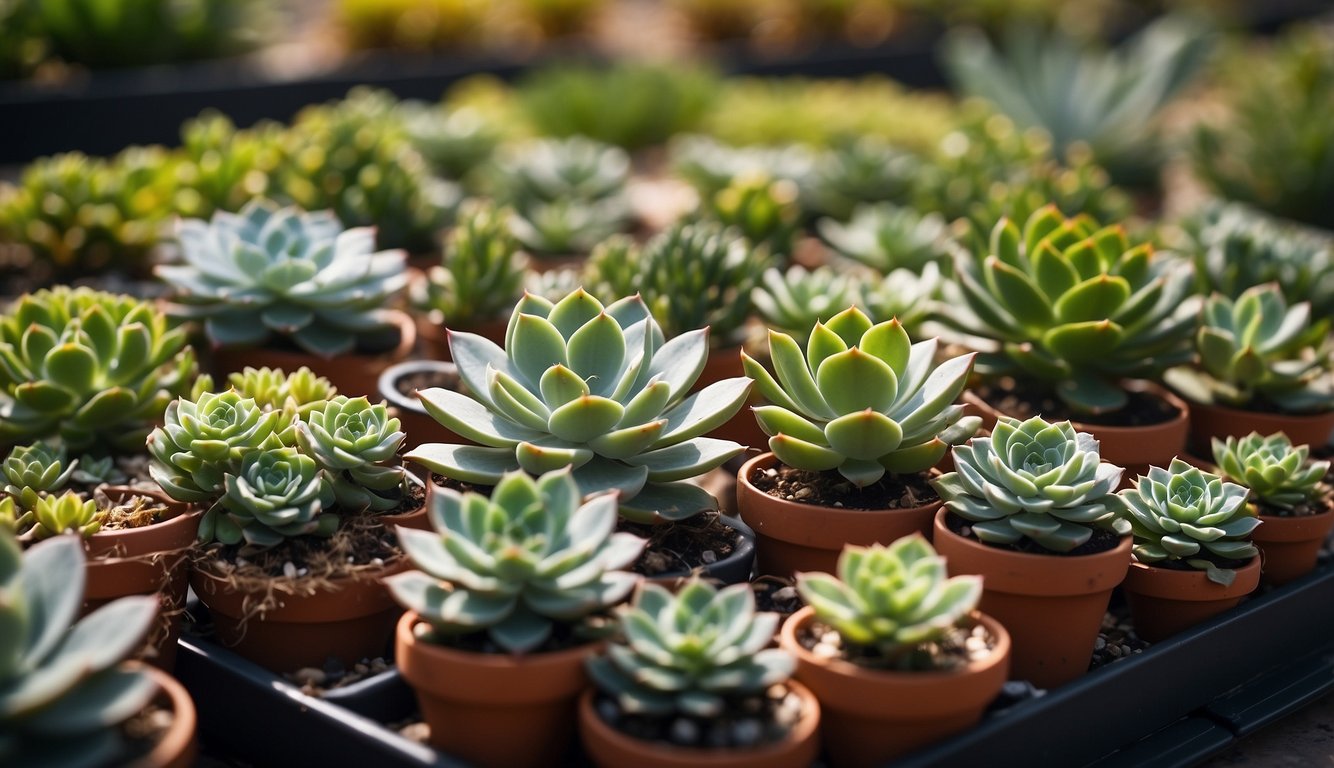
As a succulent enthusiast, I find it fascinating to learn about the different types of succulents and their unique characteristics. Succulents are classified based on their growth patterns, leaf shapes, and sizes. In this section, I will discuss the two primary ways in which succulents are classified.
By Genus – Succulent Plant Identification
Succulents are classified into different genera based on their physical characteristics. Each genus has its unique traits that differentiate it from other genera. Some of the most popular genera of succulents include Aloe, Echeveria, Haworthia, Sedum, and Kalanchoe.
Aloe is a genus of succulents that has over 500 species. These plants have thick, fleshy leaves that are arranged in a rosette pattern. Echeveria is another popular genus of succulents that has over 150 species. These plants have rosettes of fleshy leaves that come in a variety of colors and textures.
Haworthia is a genus of small succulents that have a rosette growth pattern. These plants are easy to care for and come in a variety of shapes and sizes. Sedum is a genus of trailing succulents that have thick, fleshy leaves. These plants are perfect for hanging baskets or as ground cover in a garden. Kalanchoe is a genus of succulents that have thick, waxy leaves and vibrant flowers.
By Growth Patterns – Succulent Plant Identification
Succulents are also classified based on their growth patterns. There are three primary growth patterns: rosettes, trailing, and clumps. Rosettes are succulents that grow in a circular pattern and have leaves that are arranged in a rosette shape. Trailing succulents are plants that grow along the ground or hang down from a container. Clumping succulents are plants that form clusters of rosettes or stems.
Understanding the different ways in which succulents are classified can help you identify and care for your plants better. Whether you’re a beginner or an experienced succulent grower, knowing the different types and their unique characteristics will help you create a stunning succulent collection.
Propagation and Cultivation – Succulent Plant Identification

Growing succulents can be a rewarding and enjoyable experience. Whether you are an experienced gardener or a beginner, succulents are easy to propagate and cultivate. In this section, I will discuss two methods of propagation: offsets and cuttings, and seeds and germination.
Offsets and Cuttings – Succulent Plant Identification
One of the easiest ways to propagate succulents is by using offsets or cuttings. Offsets are small plants that grow from the base of the parent plant. They can be removed and replanted in a new pot or location. Cuttings are pieces of the parent plant that are removed and allowed to root in soil or water.
To propagate using offsets, gently remove the baby plant from the parent plant using a sharp, sterile knife. Allow the offset to dry for a few days before planting it in well-draining soil. Water sparingly until the plant has established roots.
To propagate using cuttings, remove a healthy leaf or stem from the parent plant. Allow the cutting to dry for a few days before planting it in well-draining soil. Water sparingly until the cutting has established roots.
Seeds and Germination – Succulent Plant Identification
Another way to propagate succulents is by using seeds. While this method takes longer than using offsets or cuttings, it can be a fun and rewarding experience.
To propagate using seeds, start by collecting the seeds from a mature succulent plant. Sow the seeds in well-draining soil and keep the soil moist until the seeds germinate. Once the seedlings have sprouted, water sparingly and provide indirect sunlight.
It is important to note that not all succulent species can be propagated using seeds. Some succulent species are hybrids or cultivars, which means they have been bred for specific traits and may not produce viable seeds. Additionally, some succulent species produce offsets or cuttings more readily than others.
Propagating and cultivating succulents is a fun and rewarding experience. Whether you choose to use offsets and cuttings or seeds and germination, succulents are easy to grow and maintain. With a little patience and care, you can create a beautiful and thriving succulent garden.
Troubleshooting Common Issues – Succulent Plant Identification
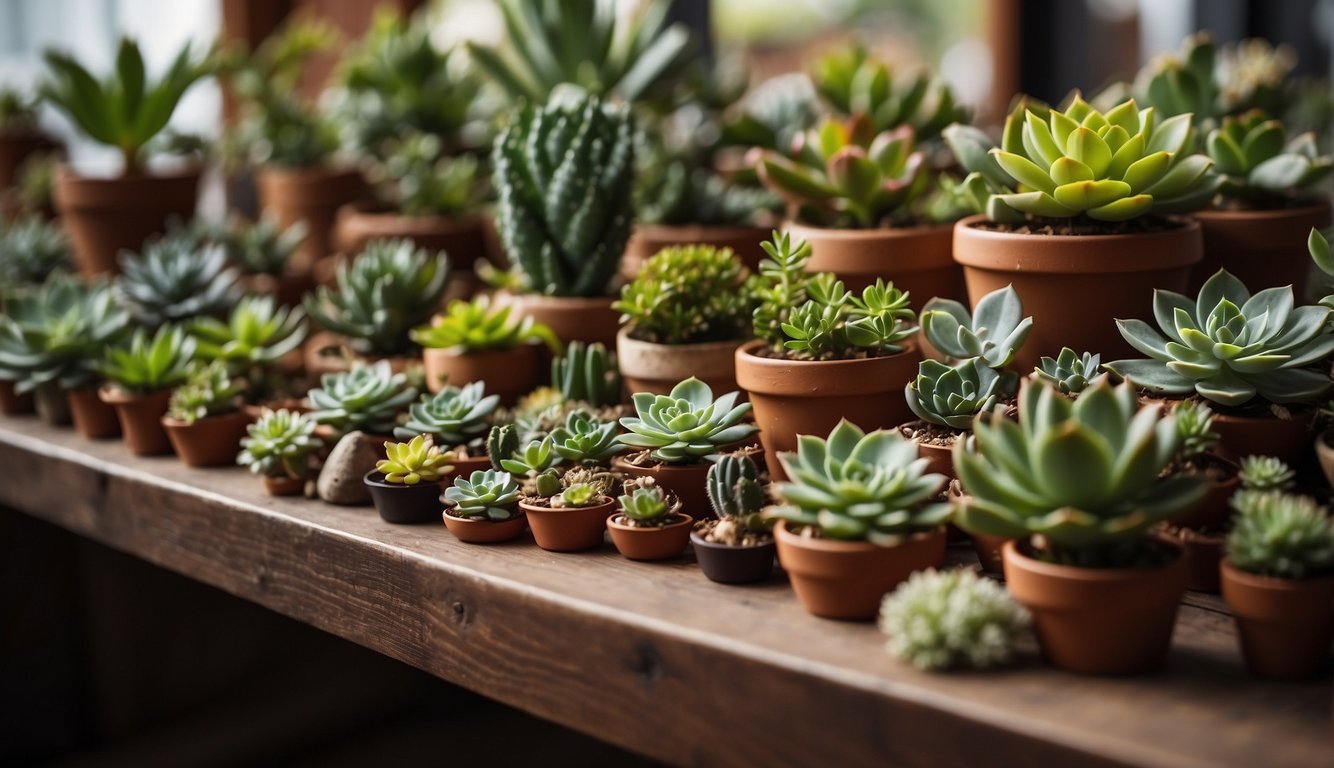
As much as we love our succulent plants, they can sometimes encounter problems that affect their health and appearance. In this section, I will cover some of the most common issues that succulent plants face, along with their possible solutions.
Pests and Diseases – Succulent Plant Identification
Succulent plants are generally resistant to pests and diseases, but they are not immune to them. Some of the common pests that can attack succulent plants include mealybugs, spider mites, and scale insects. These pests can cause damage to the leaves, stems, and roots of the plant, which can lead to stunted growth and even death.
To prevent pest infestations, it is important to keep your succulent plants clean and healthy. You can do this by removing any dead or damaged leaves, and by wiping the leaves with a damp cloth to remove any dust or debris. If you notice any signs of pest infestation, such as webbing, sticky residue, or tiny insects, you can treat the plant with an insecticidal soap or neem oil.
In addition to pests, succulent plants can also be affected by fungal and bacterial diseases. These diseases can cause discoloration, wilting, and rotting of the plant. To prevent the spread of disease, it is important to avoid overwatering your succulent plants, and to provide them with good air circulation and well-draining soil.
Environmental Stress
Succulent plants are adapted to survive in harsh environments, but they can still be affected by environmental stress. Some of the common environmental stressors that can affect succulent plants include extreme temperatures, inadequate light, and improper watering.
To prevent environmental stress, it is important to provide your succulent plants with the right growing conditions. This includes providing them with bright, indirect light, and avoiding direct sunlight, especially during the hottest part of the day. It also means watering your succulent plants sparingly, and allowing the soil to dry out completely between waterings.
While succulent plants are generally easy to care for, they can still encounter problems that affect their health and appearance. By keeping your succulent plants clean and healthy, providing them with the right growing conditions, and addressing any issues promptly, you can help ensure that they thrive for years to come.
Succulent Photography and Documentation – Succulent Plant Identification
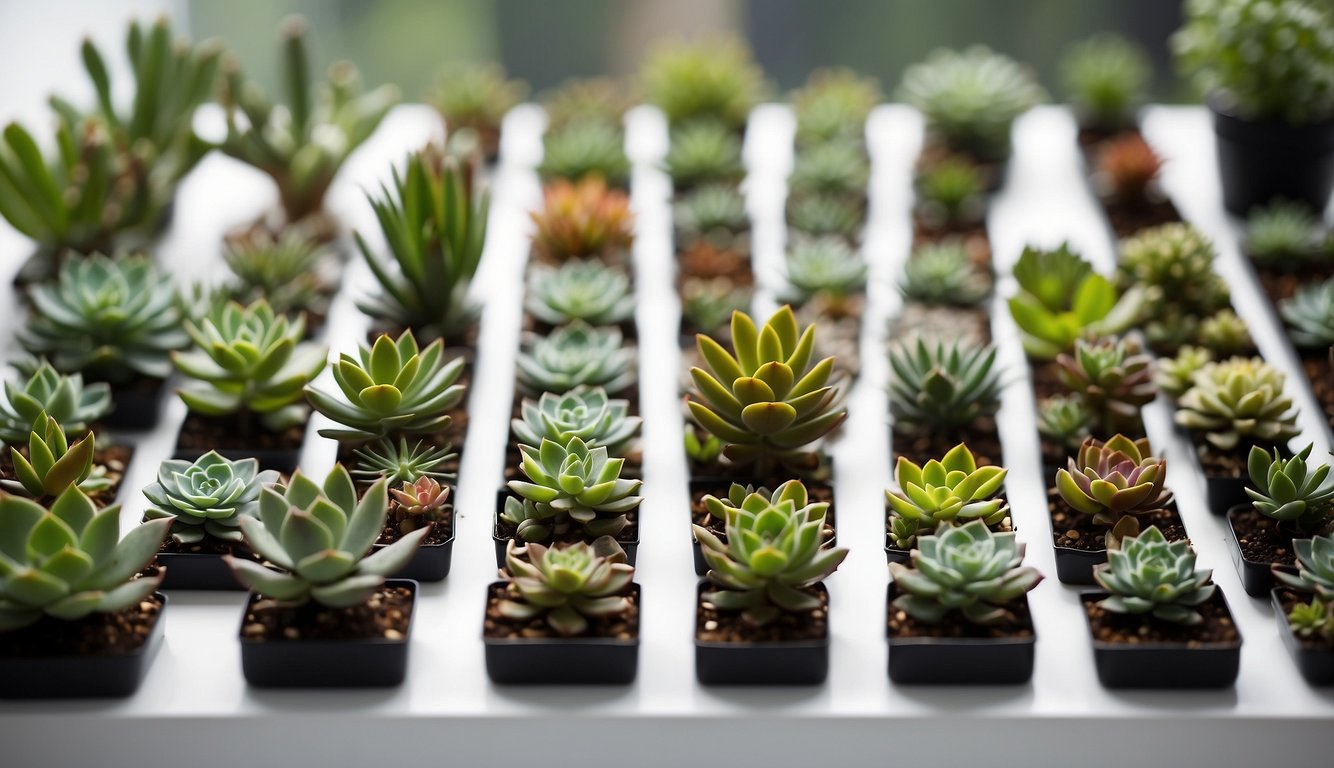
As a succulent enthusiast, I have found that taking clear photos and maintaining a succulent journal are essential for proper identification and documentation. In this section, I will share some tips on how to take clear photos and maintain a succulent journal.
Taking Clear Photos
When taking photos of your succulents, it is important to ensure that they are clear and focused. This can be achieved by using a good quality camera or smartphone with a high-resolution lens. To capture the details of your succulent, it is recommended to take close-up shots of the leaves, stem, flowers, and overall shape of the plant.
It is also important to consider the lighting when taking photos of your succulents. Natural light is the best option, as it provides a clear and accurate representation of the plant’s colors and textures. Avoid taking photos in direct sunlight, as it can cause harsh shadows and overexposure. Instead, take photos in a well-lit area with diffused light.
Maintaining a Succulent Journal – Succulent Plant Identification
A succulent journal is a great way to document your plants and keep track of their growth and development. In your journal, you can record the names of your succulents, their origin, and any other relevant information such as their watering and fertilization schedule.
To make your journal more organized, you can use tables or lists to categorize your succulents based on their type, size, or color. You can also include photos of your succulents in your journal to help with identification and comparison.
Keeping a succulent journal is not only helpful for identification and documentation but also for monitoring the health of your plants. By recording any changes or issues that arise, you can quickly identify and address any problems before they become more serious.
Taking clear photos and maintaining a succulent journal are important aspects of succulent identification and documentation. By following these tips, you can ensure that your succulent collection is properly documented and organized.
Succulent Sleuthing: Succulent Plant Identification
Today, we’re embarking on a botanical mystery: succulent plant identification!
Now, identifying succulents can be a bit tricky. They come in all shapes, sizes, and colors. But fear not, with a keen eye and a bit of knowledge, you can become a succulent sleuth! You can check our homepage here.
Firstly, look at the leaves. Are they thick and fleshy? That’s a classic sign of a succulent. They store water in their leaves, which is why they’re so plump!
Next, consider the color. Many succulents have unique colorations, from vibrant greens to deep purples. It’s like a rainbow in plant form!
And don’t forget, shape is key. Some succulents are tall and spiky, others are short and round. Each one is unique!
So, if you’re ready to dive into the world of succulent identification, head over to theherbprof.com. It’s your go-to guide for all things succulent!
Remember, folks, every plant has a story to tell. So, let’s keep exploring, keep learning, and keep laughing. Happy gardening!
References – Succulent Plant Identification
Little Herb Encyclopedia, by Jack Ritchason; N.D., Woodland Publishing Incorporated, 1995
The Ultimate Healing System, Course Manual, Copyright 1985, Don Lepore
Planetary Herbology, Michael Tierra, C.A., N.D., Lotus Press, 1988
Handbook of Medicinal Herbs, by James A. Duke, Pub. CRP Second Edition 2007
The Complete Medicinal Herbal, by Penelope Ody, Published by Dorling Kindersley
Check the Following Articles!
Best Fertilizer For Tomato Plants: Top Picks For Harvest
Planting Dill in Pots: The Mega Guide To Help Out Now!
Can Tomato Plants Be Propagated? The Ultra Guide
Frequently Asked Questions – Succulent Plant Identification
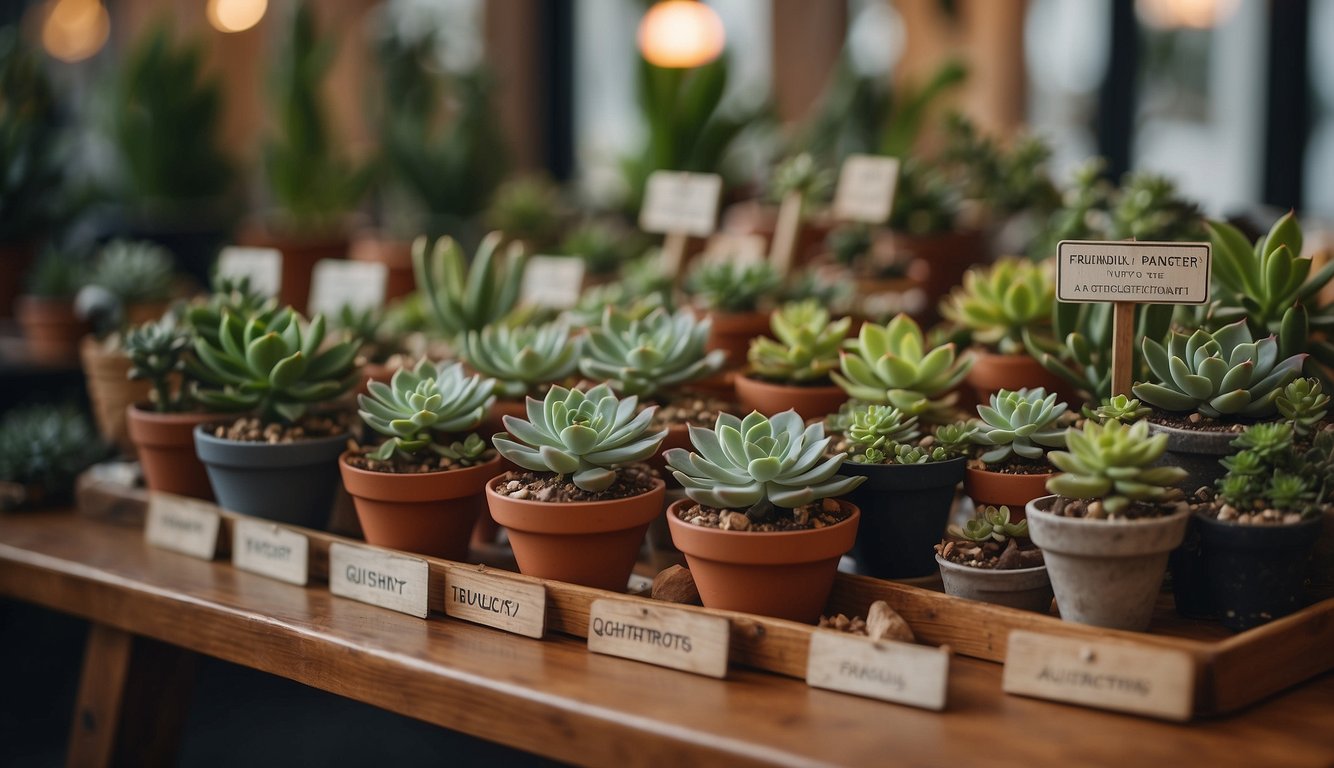
How can I identify different types of succulents?
Identifying different types of succulents can be challenging for beginners. However, there are some distinguishing features that can help you differentiate between different species. Some of the most common features to look for include the shape and texture of the leaves, the growth habit of the plant, the flowering patterns, color variations, and geographic origin. You can also use succulent identification resources like Succulent Identification Guide or Succulent Types: Identifying with Pictures for Easy Identification to help you identify unknown succulent plants.
What are the distinguishing features of fuzzy succulents?
Fuzzy succulents are a unique type of succulent that has a soft, velvety texture on its leaves. These types of succulents are also known as “hairy succulents” or “furry succulents.” Some examples of fuzzy succulents include the Kalanchoe tomentosa, Echeveria setosa, and the Senecio rowleyanus. The distinguishing features of these types of succulents are their soft, hairy leaves, which can range in color from green to gray.
Where can I find a reliable succulent identification chart?
If you’re a succulent lover looking to expand your collection, you know how important it is to find the perfect succulent that fits your preferences and care abilities. A reliable succulent identification chart can help you identify different types of succulents and choose the right one for your needs. You can use the PDF Identification Chart provided by Succulents Hub to easily find the perfect succulent for you.
Can I identify succulents using an online app or tool?
Yes, there are many online apps and tools available that can help you identify different types of succulents. Some popular apps include PlantSnap, PictureThis, and iNaturalist. These apps use image recognition technology to identify different types of plants, including succulents. However, it’s important to note that these apps may not always be accurate, and it’s always best to double-check your identification using other resources like Succulent Identification Guide or Succulent Types: Identifying with Pictures for Easy Identification.
What are the characteristics of the most popular succulent species?
Some of the most popular succulent species include the Aloe Vera, Jade Plant, Echeveria, Haworthia, and Sedum. These types of succulents are known for their unique and beautiful appearance, as well as their low maintenance requirements. Aloe Vera is the most commonly planted succulent plant, known for its beauty and medicinal properties. Jade Plant is another popular succulent that is easy to care for and can grow up to three feet tall. Echeveria is a rosette-shaped succulent with thick, fleshy leaves that come in a variety of colors. Haworthia is a small, low-growing succulent that is perfect for indoor environments. Sedum is another popular succulent that is known for its hardiness and ability to thrive in a variety of environments.
Are there specific markers to identify succulents for indoor versus outdoor environments?
There are no specific markers to identify succulents for indoor versus outdoor environments. However, there are some types of succulents that are better suited for indoor environments, while others thrive in outdoor environments. For example, Haworthia and Gasteria are two types of succulents that are well-suited for indoor environments, while Sedum and Sempervivum are better suited for outdoor environments. It’s important to consider the lighting, temperature, and humidity requirements of different types of succulents before choosing one for your indoor or outdoor environment.
